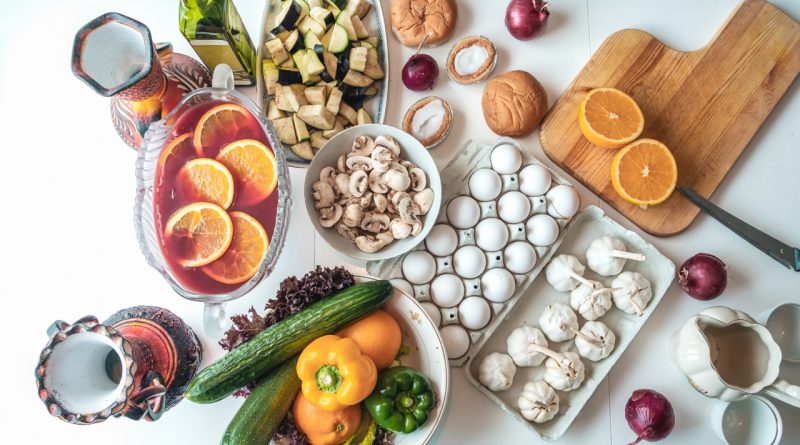How to Choose the Best Pastry Brush for Baking
When it comes to baking, having the right tools can make all the difference. Among these tools, a quality pastry brush often goes overlooked. This seemingly simple utensil can be crucial for tasks like applying egg wash, spreading butter, or glazing pastries. In this article, we will explore how to choose the best pastry brush for your baking needs, ensuring your kitchen is equipped for success.
Understanding the Importance of a Quality Pastry Brush
A pastry brush is more than just a tool; it’s an essential element in the baking process. A high-quality brush allows for precision and efficiency, whether you’re applying a delicate glaze or a hearty layer of butter. Using the right brush can enhance not only the appearance of your baked goods but also their texture and flavor. For instance, a well-applied egg wash can create a golden, glossy finish that elevates the overall presentation.
Moreover, the material and construction of a pastry brush can impact the results you achieve. A good brush will spread ingredients evenly and consistently, minimizing the risk of uneven cooking or burning. With the right brush, you can easily reach those hard-to-access corners of baking pans and ensure your pastries are perfectly coated. Investing in a quality pastry brush can save you time and effort in the long run, making your baking experience smoother and more enjoyable.
Lastly, a durable pastry brush can withstand the test of time, giving you consistent results across multiple baking sessions. Unlike cheaper counterparts that may shed bristles or warp under heat, a well-made pastry brush will maintain its integrity, allowing you to focus on perfecting your recipes rather than replacing worn-out tools. Thus, understanding the importance of a quality pastry brush is the first step towards elevating your baking game.
Key Features to Look for in a Pastry Brush
When selecting the ideal pastry brush, several key features should be considered. First and foremost, the size and shape of the brush are crucial. Brushes come in various sizes, from wide ones for covering large surfaces to smaller ones for precision work. Determine the typical tasks you’ll be performing to select a brush that meets your needs, whether it’s glazing a pie or applying egg wash to a delicate pastry.
Another important feature to look for is the type of bristles. The bristles should be soft yet firm enough to hold and distribute liquids effectively. Additionally, the design of the bristles should allow for easy cleaning and maintenance. A brush that retains moisture or food particles can lead to cross-contamination, so choose one that can be easily washed and dried.
Lastly, consider the handle’s material and ergonomics. A comfortable grip can make a significant difference, especially when you’re working on larger projects or spending extended periods in the kitchen. Look for a handle that offers a good balance between weight and comfort, ensuring you can maneuver the brush with precision without causing strain.
Comparing Materials: Silicone, Natural, and Nylon Brushes
Pastry brushes are typically made from three main materials: silicone, natural bristles, and nylon. Silicone brushes are known for their durability and heat resistance, making them ideal for high-temperature applications. They are also easy to clean, often being dishwasher safe, and they don’t absorb flavors or odors, which can be beneficial in baking.
Natural bristle brushes are favored by many professional bakers for their ability to hold and distribute liquids effectively. Made from animal hair, these brushes provide excellent control, allowing for a smooth and even application of glazes or washes. However, they may require more care in cleaning and may not be suitable for high heat, as they can lose shape or burn over time.
Nylon brushes offer a mid-range alternative, combining some advantages of both silicone and natural bristles. They are typically more affordable and can be used for various tasks, although they may not perform as well as natural brushes in terms of liquid retention. When choosing a material, consider how often you’ll be using the brush and for what specific tasks to determine the best fit for your baking needs.
Top Recommendations for Pastry Brushes in 2023
In 2023, several pastry brushes stand out for their quality, performance, and user reviews. One top recommendation is the Silicone Pastry Brush by OXO, acclaimed for its heat resistance and easy cleaning. This brush features a comfortable handle and sturdy silicone bristles that effectively distribute egg wash and glazes without shedding.
Another excellent option is the Natural Bristle Pastry Brush by Ateco. This brush is favored by professionals for its ability to hold liquid and its traditional design. It has a wooden handle that provides a secure grip, and its bristles are soft enough for delicate applications yet strong enough to handle thicker substances.
For those looking for a versatile and budget-friendly choice, the Nylon Pastry Brush by Wilton is a solid pick. It offers a good combination of performance and affordability, featuring durable bristles that can handle various baking tasks. This brush is particularly easy to clean, making it a practical addition to any home baker’s toolkit.
Choosing the right pastry brush is an integral part of becoming a successful baker. By understanding the importance of a quality brush, knowing what features to look for, comparing materials, and exploring top recommendations, you can make an informed decision that enhances your baking experience. With the right pastry brush in hand, you’ll be well on your way to creating beautifully finished pastries and baked goods that impress. Happy baking!
